This is one in a series of posts on the Nikon Z9. You should be able to find all the posts about that camera in the Category List on the right sidebar, below the Articles widget. There’s a drop-down menu there that you can use to get to all the posts in this series; just look for “Z9”.
A few weeks ago I did a post that, among other things, covered the way that the engineering dynamic range of the Nikon Z9 varies with shutter speed. This was an important curve:
The above measurements were made with LENR turned off. There is something going on at the transition from 1/4 to 1/3 second exposure duration. I’ve circled that transition in red above. The read noise is reduced at 1/3 second relative to that of the 1/4 second exposure, and hence the engineering dynamic range goes up.
What’s happening?
Filtering.
Here are the horizontal and vertical spectra of the four raw planes at 1/4 second:
Plane 1 is the red plane.
Plane 2 is the first green plane.
Plane 3 is the second green plane.
Plane 4 is the blue plane.
There is evidence of low pass filtering in the vertical direction, but little affects elsewhere.
At 1/3 second, things change:
Now there is low pass filtering in all four channels in the horizontal direction.
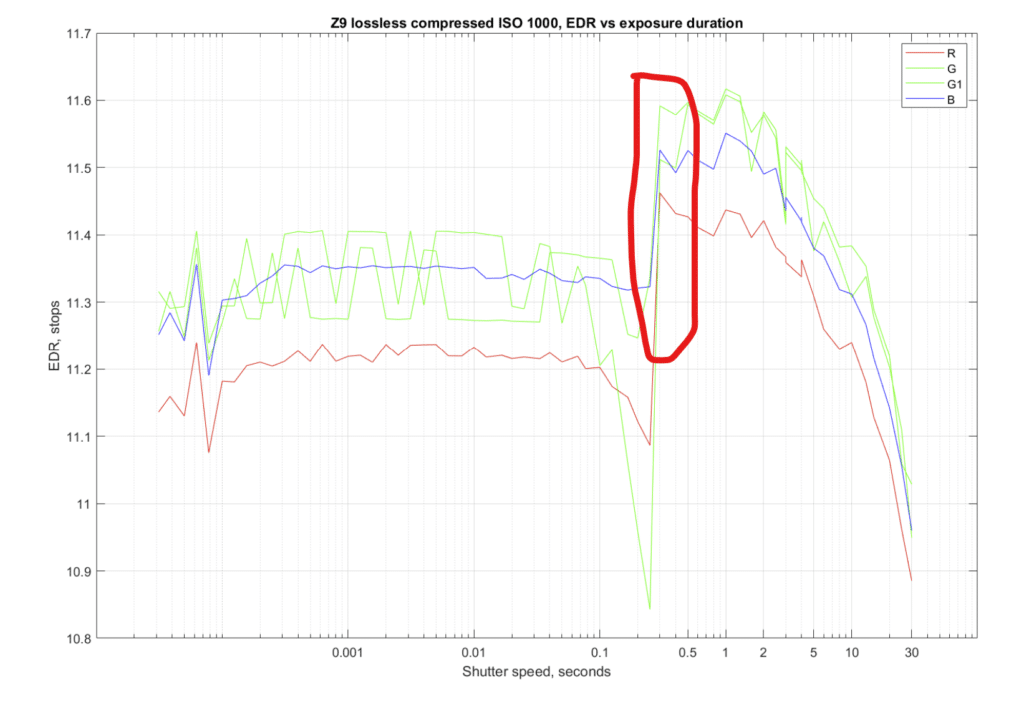
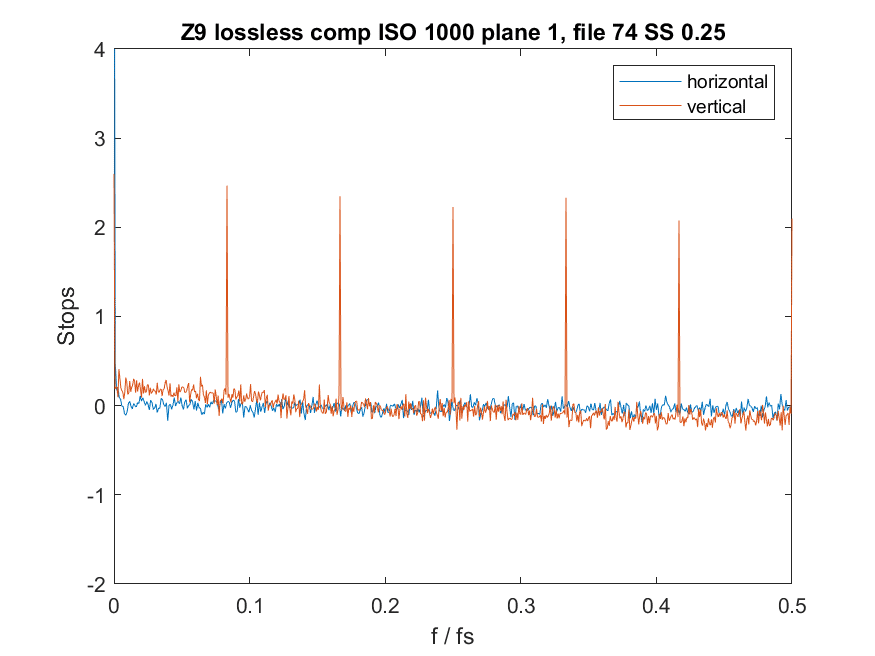
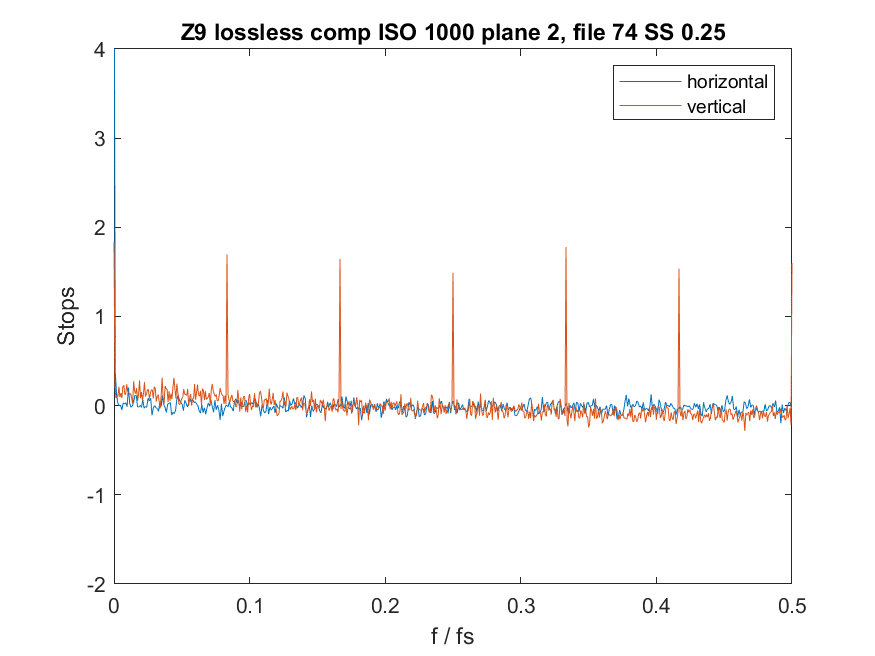
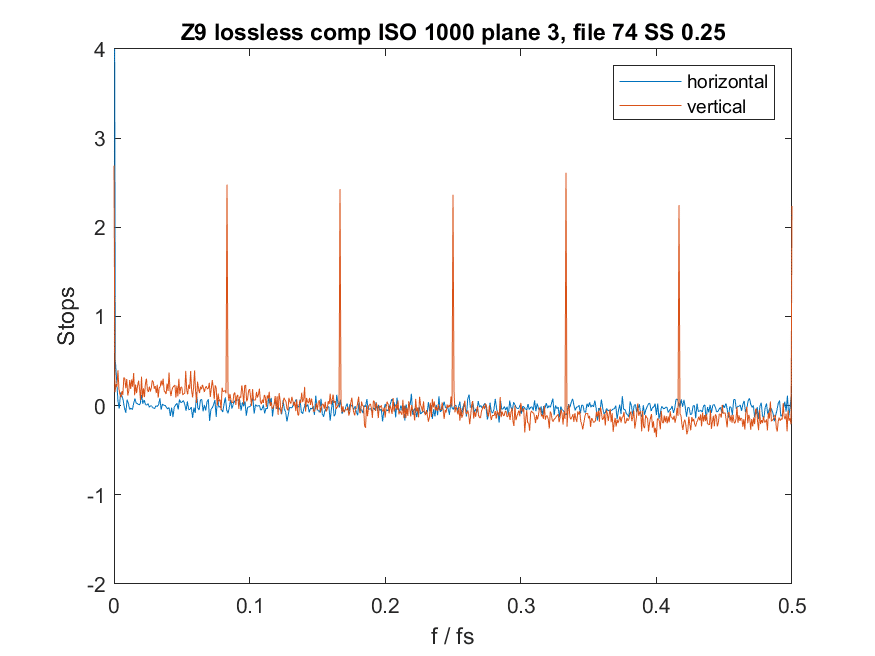
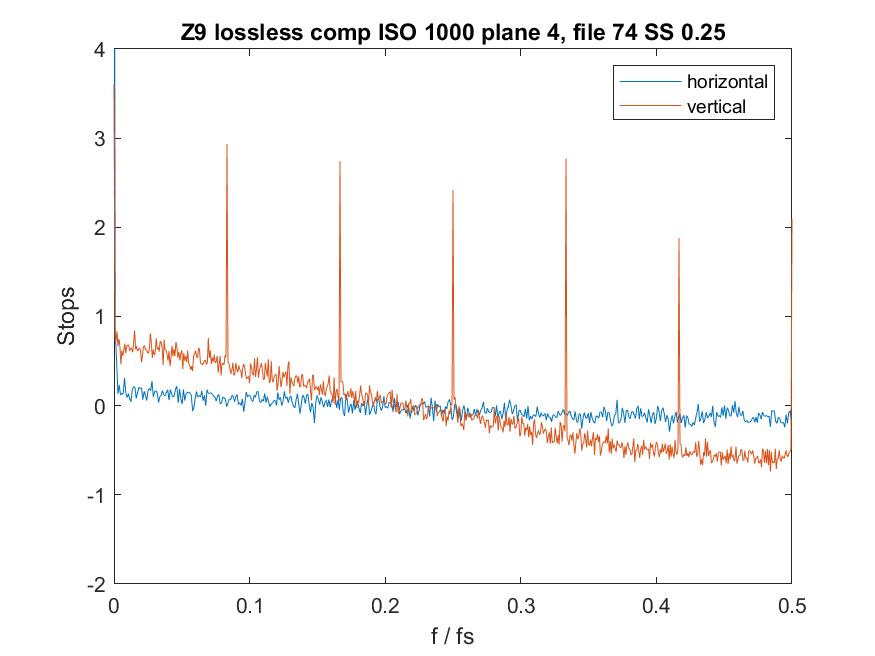
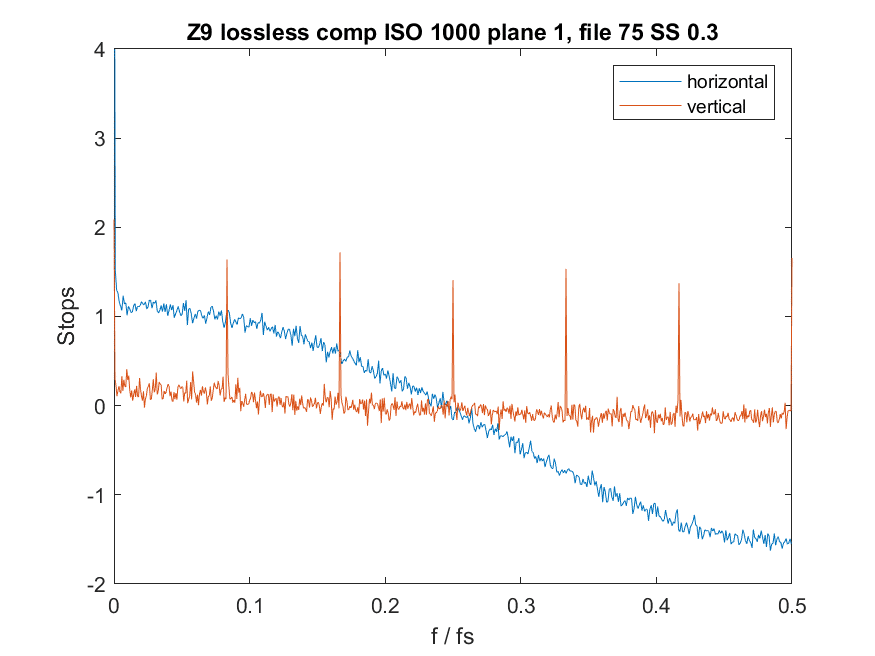
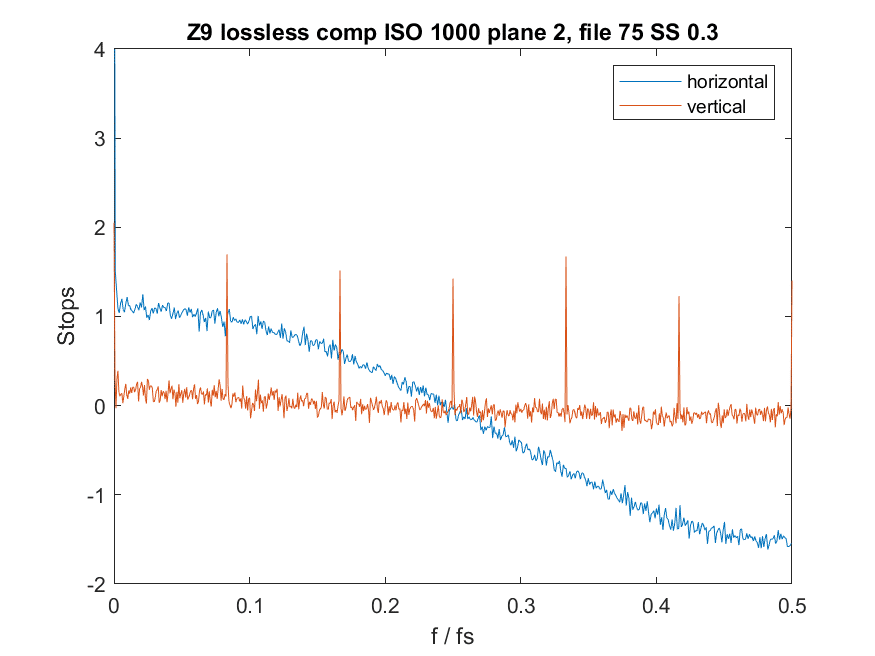
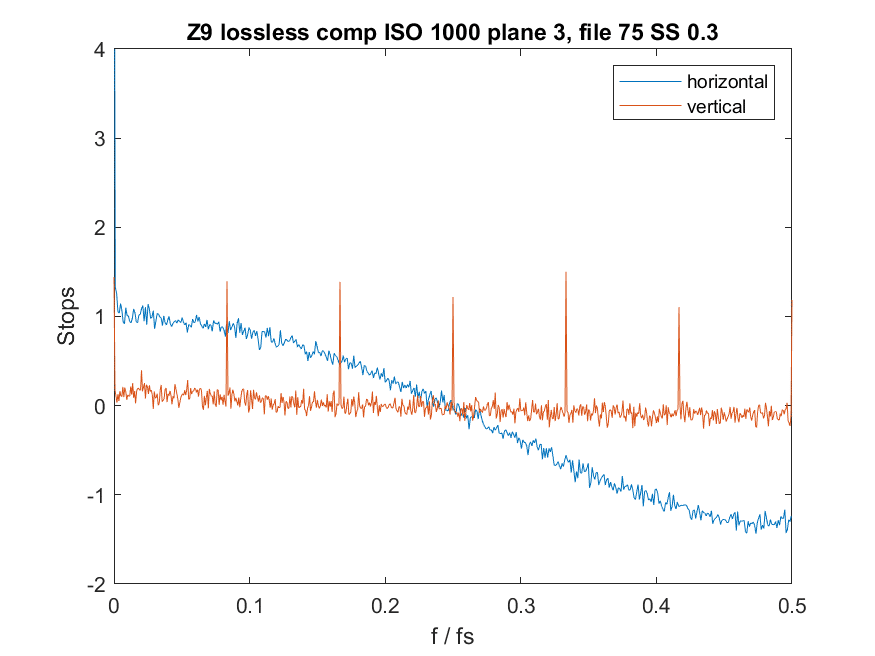
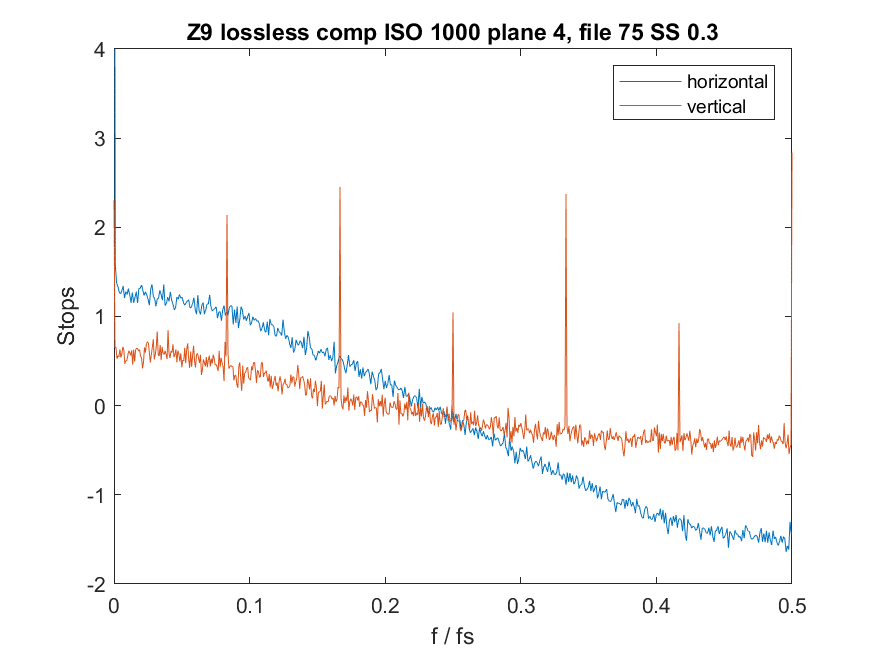
Jack Hogan says
Jim, have we ever figured out why this filtering kicks in at 1/3s? Hot pixel removal?
JimK says
No, I don’t know why. It seems too early for low
pass filtering.